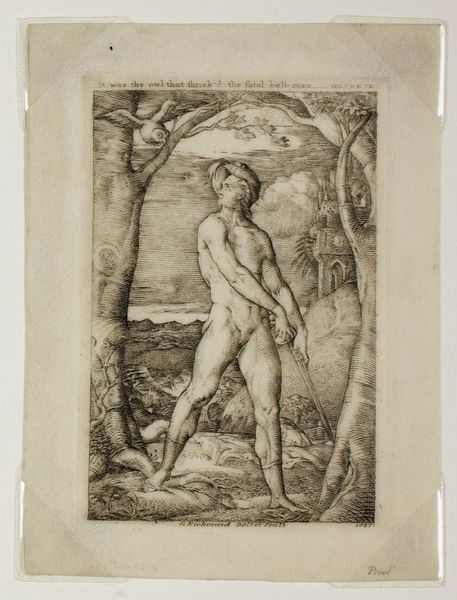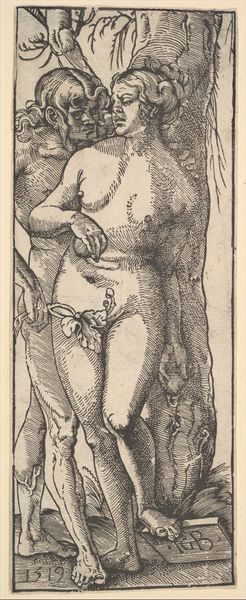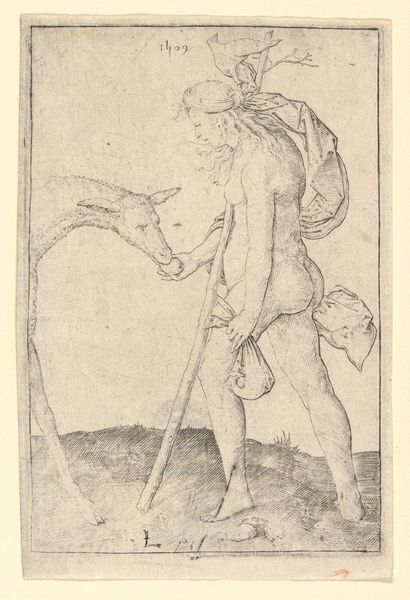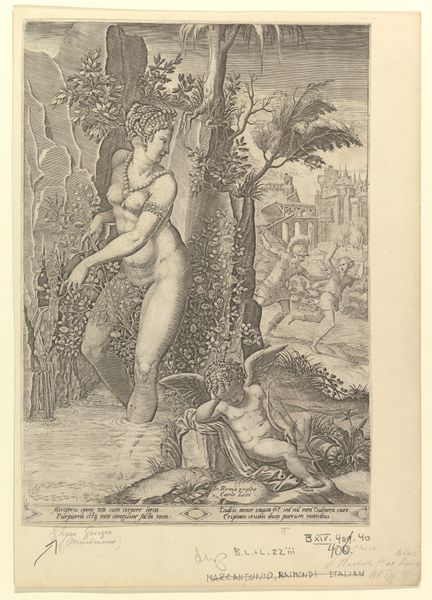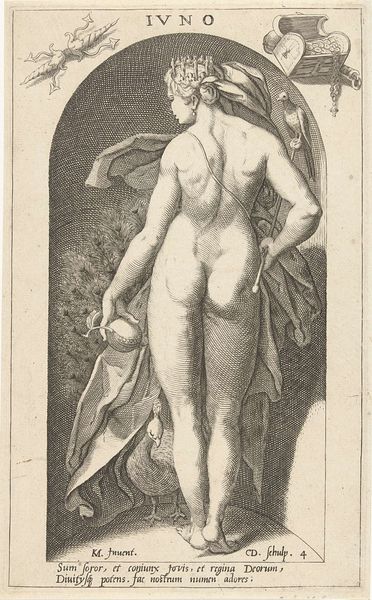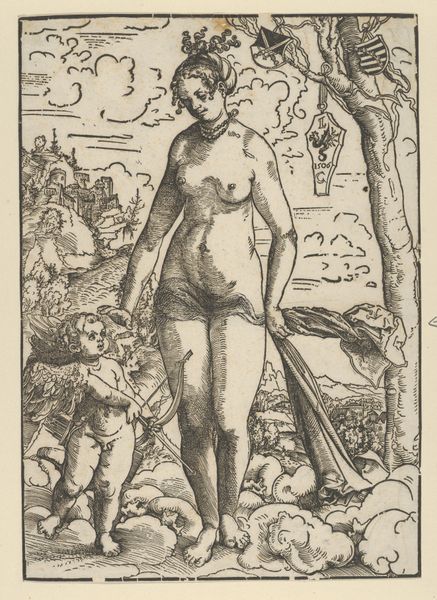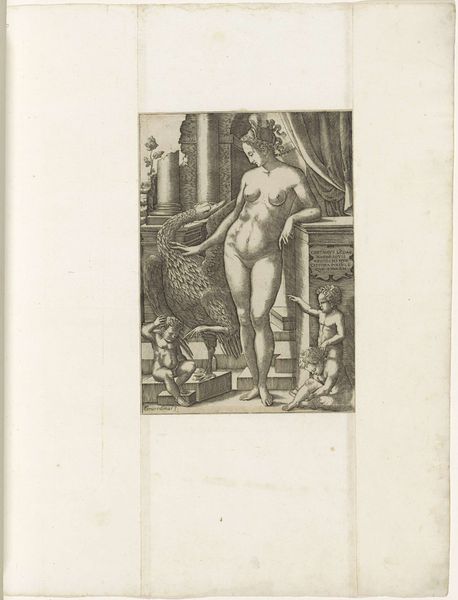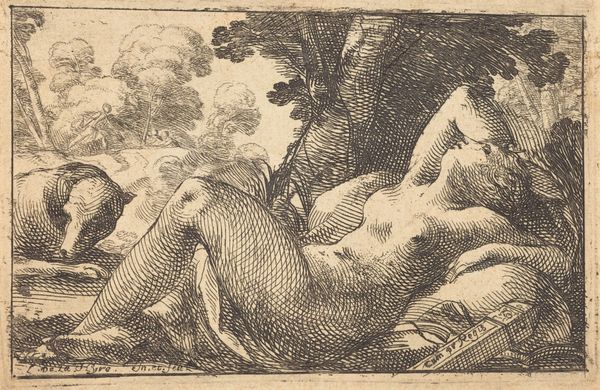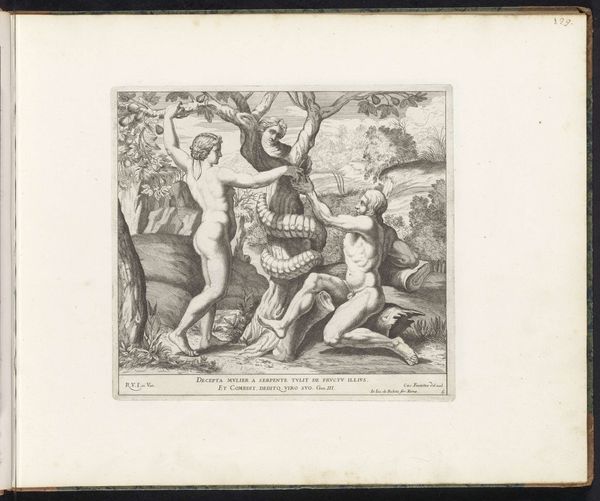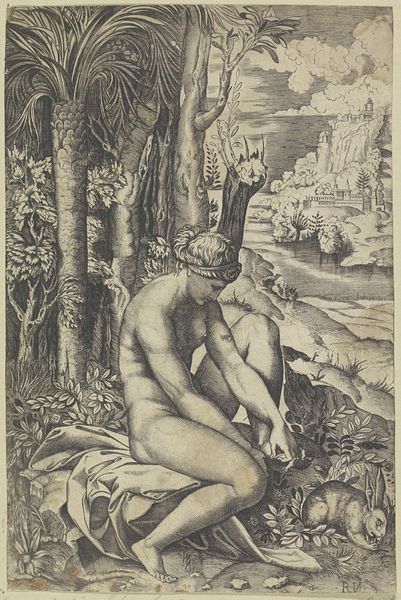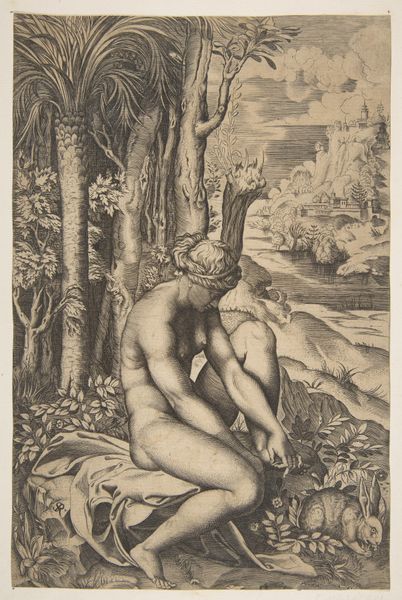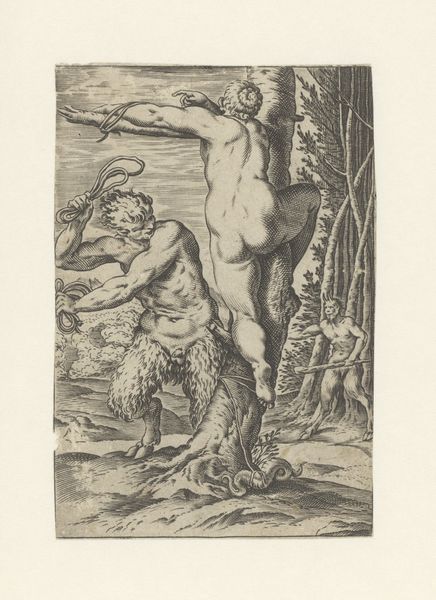
drawing, print, paper, engraving
#
drawing
# print
#
old engraving style
#
landscape
#
figuration
#
paper
#
romanticism
#
nude
#
engraving
Dimensions: 90 × 52 mm (image); 114 × 90 mm (sheet, trimmed within platemark)
Copyright: Public Domain
Curator: Looking at this Edward Calvert print, titled "The Bacchante," I'm immediately struck by the figure's dynamic pose and the romantic sensibility suffusing the entire composition. Editor: It's very intense! The heavy use of lines certainly creates a kind of frenzied, ecstatic atmosphere around the figure. I wonder what Calvert aimed to express. Curator: The title gives us a hint. Bacchantes, followers of Bacchus, the Roman god of wine and ecstasy, were known for their unrestrained celebrations and revelry. Calvert's image attempts to visually capture that sense of abandon. We observe the figure drinking from what appears to be a flute in the wilderness, the drapery swept back from the intensity of the imagined movement. Editor: That contextual understanding casts the graphic choices in an intriguing light. Do you think Calvert’s style echoes similar works? The sharp contrasts definitely make it quite unique. Curator: He often created pastoral scenes imbued with a pantheistic feeling, evoking a sense of communion with nature, typical of English Romanticism. Calvert developed a unique style of engraving, characterized by dense, intricate lines that give texture and a dreamlike quality to the imagery. In regards to materiality, note also that the relative cheapness of the print form meant that many people had access to owning an original artwork and imagery, unlike paintings, whose cost would make such possession rare. Editor: Yes, this is interesting—this brings art closer to the public. However, this stylistic choice almost diminishes the impact, the clarity. Perhaps, it intends to reflect that feeling of blurred experiences typical of an alcohol-influenced experience, echoing the rituals associated with the god Bacchus. Curator: That's an interesting interpretation. Considering the subject, a blurred experience through graphic means may well have been intentional. Editor: Ultimately, this print reflects its socio-historical context of increasing cultural engagement and visual experimentation. The combination, as always, speaks to many aspects we need to study in order to unlock any artwork. Curator: Absolutely. And perhaps through this type of analysis, visitors better learn to appreciate how art, and its graphic language, mediates our connection to history, culture, and ultimately, human experience.
Comments
No comments
Be the first to comment and join the conversation on the ultimate creative platform.
